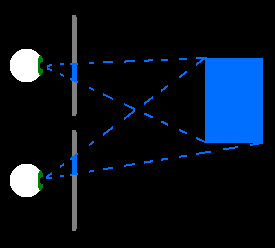
I haven't posted for like... 1.5 years, so it's high time I write
about something useful or entertaining. Well, this post is not going
to be that, and instead I will be talking about an obscure piece of
code written in a dead language.
Click to read more
(2537 words)

We've found a drop-in replacement for the Nreal Light, called
the Grawoow G530 (or Metavision M53, and who knows how many other
names), so we finally have 3 more protocols to write about in this blog.
Click to read more
(2463 words)

I felt a need to apologize about the site looking amateurish in a client call for
the second time in a week, and it was kind of a red flag. We don't want to have a
bland, cookie cutter 2020s company info page, but we do need to make it less outdated,
while keeping the aesthetics.
Click to read more
(975 words)

It was time to integrate support for the Nreal Light's stereo camera into our
Android build, but our go-to library (nokhwa)
does not work on Android. In fact, nothing seemed to support this specific camera
on Android... So it was time to make our own USB Video Device Class implementation
(but not really).
Click to read more
(1434 words)

The whole FIR thing has served us well for the last
few months, but some new developments has forced us to look into alternative
prediction algorithms. Thankfully (?) I'm on many Discord channels, and someone
mentioned Double Exponential Smoothing on one of them. Everyone loves a good
clickbait, so you won't believe what happened in the end...
Click to read more
(2235 words)

We are experimenting with various VSLAM algorithms, and a big part
of those is always "bundle optimization". While it is just spicy
Least Squares with sparse matrices, I couldn't find a well-maintained Rust
library to do this. I, however, found g2o, a c++ library which is both
very well structured, easy to use, and flexible. The only problem is
that it's not Rust, it's C++...
Click to read more
(2437 words)

I've just finished implementing the third completely different
USB protocol for my open-source AR glasses drivers project,
so it's time to summarize my findings, and drop some fun facts
on you in the process.
Click to read more
(3529 words)

It's been a long time since I've been to any security CTFs,
even longer time since I've written my last writeup.
But, as life would have it, I came across a task during my AR
adventures that was exactly like a CTF task:
I've found a non-standard CRC checksum on a firmware file, and
had to reverse-engineer its parameters.
Click to read more
(2419 words)

One of the less fun parts of trying to run a company is having
to create all kinds of marketing materials, such as product and
investor slides.
I already use reveal.js for all my
slideshow needs, so there's one thing that will make the job
bearable:
A scrolling synthwave-style background made with HTML+CSS.
Click to read more
(1559 words)

I always wanted to do a rally-style demo
for the Augmented Reality glasses, but first I'll need actual pace
notes to display.
And there's no way I'm doing that manually.
Click to read more
(1746 words)

Still field testing, still not satisfied with the image shake.
IMU prediction helps a lot, but
it is very inconsistent: sometimes it is rock stable, sometimes
it is lagging quite a bit (in the delay sense).
I've also noticed the definite lack of tearing, even though I'm
using Immediate
presentation mode, which should be low latency, but should also
cause tearing.
The lack of tearing means I still have unnecessary latency...
Click to read more
(1304 words)

I've noticed a weird distortion during field-testing the new
graphics on the AR glasses: signs that should have been far
away looked way too close, but they got further as I approached
them. Pupil distance didn't seem to fix it without introducing
other issues.
So I've decided to finally properly calibrate the projection
parameters.
Content warning:
All drawings are really badly made
with KolourPaint (KDE's version of MSPAINT).
Click to read more
(1963 words)

The main problem I have with the current AR glasses is that
it has a motion-to-photon latency of around 35ms. I don't
think this can be any lower, as this is 2 frames, and I'm
pretty sure the GPU->DP->Oled_Driver->OLED chain takes
this long.
So it's time to finally implement proper lag compensation
in software.
Click to read more
(1309 words)

You can probably see that the logo at the top left is animated. At least if your
browser decided to cooperate. This was done by using a .webm (or .mp4) video
instead of just a regular image.
But how was the logo made? The answer is not "with an image/video editing software
a normal person would use"
Click to read more
(1766 words)













